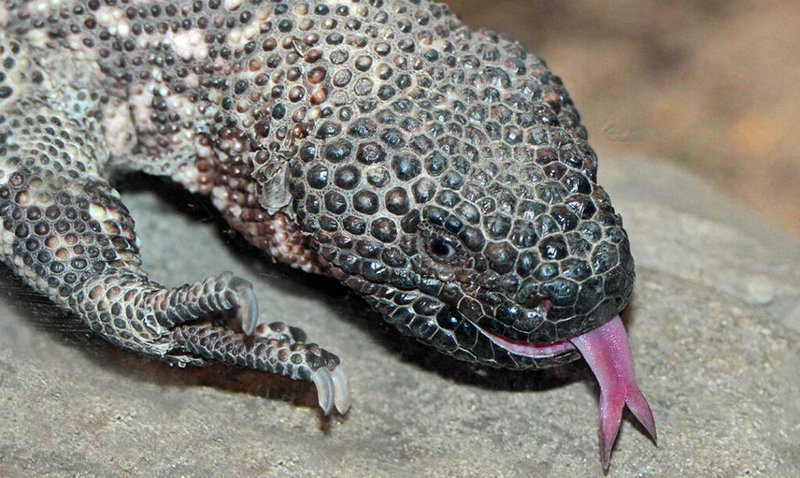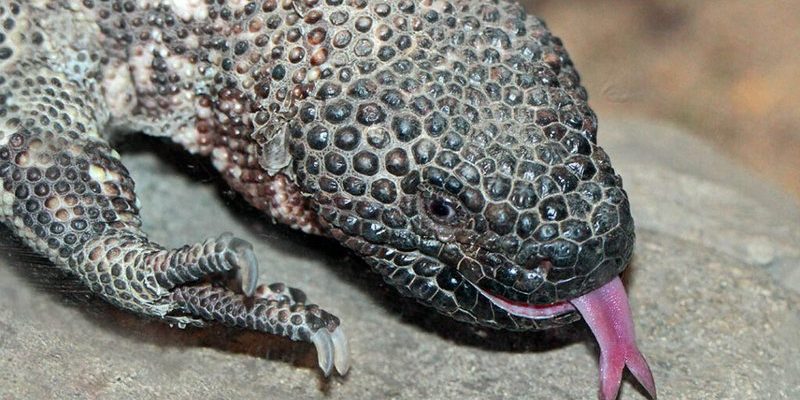
The Mexican Beaded Lizard is one of those reptiles that seems to straddle the line between fascinating and fearsome. With its distinctive, beaded scales and unique venom, you might find yourself both mesmerized and a little wary. Found mainly in Mexico, these lizards are part of the Heloderma genus, which also includes the Gila monster—a name that might ring a bell. If you’re curious about this stunning creature, you’ve come to the right place.
Let’s dive into what makes the Mexican Beaded Lizard such a captivating subject. From its diet and habitat to its unique characteristics, there’s a lot to uncover. Think of it like peeling an onion; just when you think you know everything, there’s another layer waiting to be discovered!
Physical Characteristics
The Mexican Beaded Lizard is truly a sight to behold. Its body is covered in beaded scales that give it a unique texture and appearance. These scales aren’t just decorative; they serve a purpose, helping protect the lizard from predators. The lizard can grow up to 3 feet long, but they typically reach around 2 to 2.5 feet. And yes, their colors can vary, ranging from a vibrant yellow to a deep, dark black, which can help them blend into their surroundings.
Interestingly, their bellies are often lighter in color, which contrasts beautifully with their darker backs. It’s almost like they’re wearing a stylish outfit, right? You might imagine them gliding through their natural habitats, looking both elegant and intimidating at the same time. They also have short, sturdy limbs and a broad head, which contribute to their robust appearance.
What many people may not know is that the Mexican Beaded Lizard, unlike other reptiles, has a venomous bite. This doesn’t mean they’re out to get you—these lizards are typically quite docile. However, their venom is potent and can cause pain and swelling in humans, so you wouldn’t want to irk one!
Habitat and Range
Mexican Beaded Lizards are primarily found in the dry and arid regions of Mexico, favoring areas like the Chihuahuan Desert and parts of the Sierra Madre. They love rocky terrains where they can easily burrow and hide from potential threats. Their natural habitat is not just a fancy home; it provides them with shelter and the right conditions to thrive.
What’s interesting about their living conditions is the balance they maintain. Though they are found in dry regions, they also need access to water sources. This duality means you might find them near a cactus or under a rock, cleverly keeping cool while waiting for prey.
Due to habitat destruction and climate change, their population is declining in some areas. It’s essential to recognize how our actions—whether directly or indirectly—affect these fascinating creatures. Conservation efforts are crucial to ensure they continue to thrive in the wild.
Diet and Feeding Habits
Mexican Beaded Lizards are carnivorous, predominantly feasting on small mammals, birds, and even other reptiles. Their feeding habits can be quite fascinating; they often swallow their prey whole. Imagine that! They are not picky eaters and will consume anything they can overpower.
One unique aspect of their diet is the role their venom plays. While it is mainly used for defense, it also helps them subdue prey. Once they bite, the venom immobilizes the creature, making it easier for the lizard to eat. It’s nature’s way of giving them a little extra edge in survival.
They tend to hunt during the cooler parts of the day, particularly in the early morning or late afternoon. This behavior helps them conserve energy and stay out of the heat. Instead of lurking around in the blazing sun, they’re busy finding the next meal when it’s just the right temperature for comfort!
Table of Facts
| Common Name: | Mexican Beaded Lizard |
| Scientific Name: | Heloderma horridum |
| Size: | 2 to 3 feet long |
| Weight: | 1 to 2.5 pounds |
| Habitat: | Deserts and dry rocky areas |
| Diet: | Carnivorous (mammals, birds, reptiles) |
| Venom: | Yes, it is venomous |
| Lifespan: | Up to 20 years in captivity |
Behavior and Social Structure
When it comes to behavior, the Mexican Beaded Lizard has some intriguing traits. Unlike some reptiles, they are known for being relatively solitary. They don’t form large groups or communities, which helps avoid competition for resources. In the wild, you might find them basking alone on a rock, taking in some sun—quite the tranquil lifestyle, if you ask me!
Despite their solitary nature, they have a well-defined territory. If another lizard ventures too close, they won’t hesitate to stand their ground. Their strong jaws and intimidating look act as effective deterrents. Have you ever noticed how some animals prefer to keep their space? The Mexican Beaded Lizard is no exception!
During mating season, however, things get a bit more social. Males will engage in battles for the attention of females. These confrontations can be quite spectacular, often involving pushing and wrestling. It’s like a mini wrestling match in the wild, with the winner earning the right to mate. After the mating season, females will lay eggs in small nests they dig into the ground. Isn’t nature fascinating in how it ensures the continuation of the species?
Conservation Status
The conservation status of the Mexican Beaded Lizard is a topic of concern. Due to habitat loss and illegal trade, their populations are dwindling. The International Union for Conservation of Nature (IUCN) has categorized them as ‘Near Threatened’. While they aren’t on the brink of extinction, actions must be taken to protect their habitats and ensure they have safe environments to thrive.
Conservation efforts include habitat preservation and reducing illegal trade. Awareness campaigns also play a significant role in educating the public about these creatures, helping to foster respect and interest. If you’re passionate about wildlife, this is a cause where you can make a difference by simply spreading the word.
Additionally, there are rehabilitation programs aimed at helping injured Mexican Beaded Lizards return to the wild. Every little effort counts, and it can be quite uplifting to know that dedicated people are working hard to help these amazing reptiles survive.
FAQ
What is a Mexican Beaded Lizard’s primary habitat?
The Mexican Beaded Lizard primarily inhabits the rocky desert areas of Mexico. They enjoy dry, arid environments where they can find shelter and hunt for food effectively. Their ability to thrive in such harsh conditions is quite remarkable.
Are Mexican Beaded Lizards dangerous to humans?
While they are venomous, Mexican Beaded Lizards are generally not aggressive toward humans. Their venom can cause pain and swelling, but bites to humans are rare, especially since these lizards prefer to avoid encounters. It’s best to admire them from a distance!
How long do Mexican Beaded Lizards live?
In captivity, a Mexican Beaded Lizard can live up to 20 years, sometimes even longer with proper care. In the wild, their lifespan is typically shorter due to predators and environmental factors. Nonetheless, they can have a substantial life span when protected in a safe environment.
What do Mexican Beaded Lizards eat?
Mexican Beaded Lizards are carnivorous and primarily feed on small mammals, birds, and other reptiles. Their diet is diverse, and they use their venom to subdue prey effectively. This impressive hunting technique is part of what makes them unique.
How can we help conserve Mexican Beaded Lizards?
You can help by spreading awareness about their plight and supporting wildlife conservation organizations. Promoting habitat preservation and advocating against illegal wildlife trading are also vital steps in protecting these amazing reptiles.
Do Mexican Beaded Lizards have any predators?
Yes, they face predation from larger animals, including birds of prey and other carnivorous creatures. However, their formidable bite and venomous nature help deter many of these potential threats. When threatened, they usually prefer to retreat rather than confront danger head-on.
How do Mexican Beaded Lizards reproduce?
During mating season, male Mexican Beaded Lizards engage in battles to win the attention of females. Once mating occurs, females dig nests to lay their eggs. This process showcases their unique reproductive behavior and the importance of territoriality during breeding.

